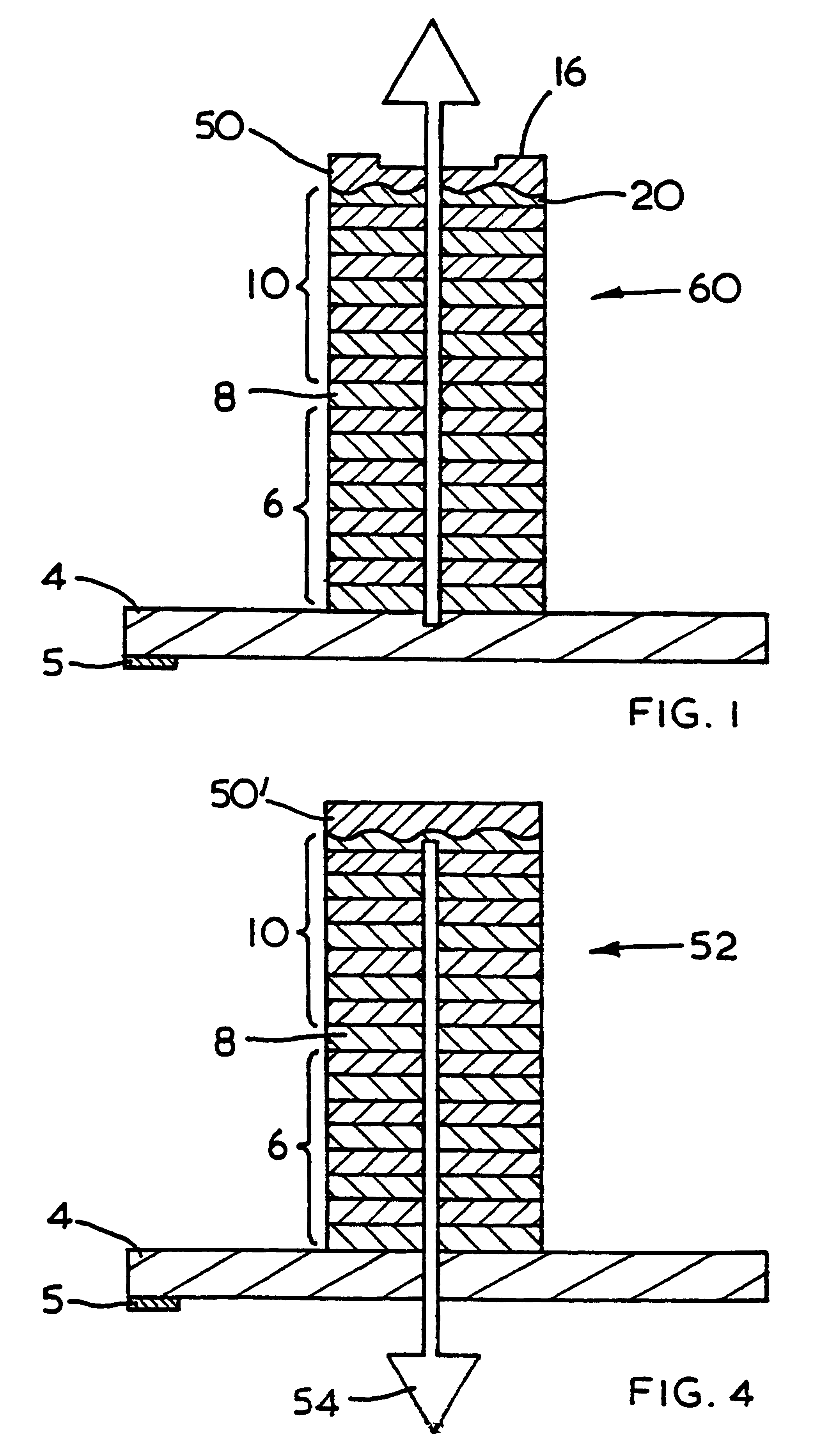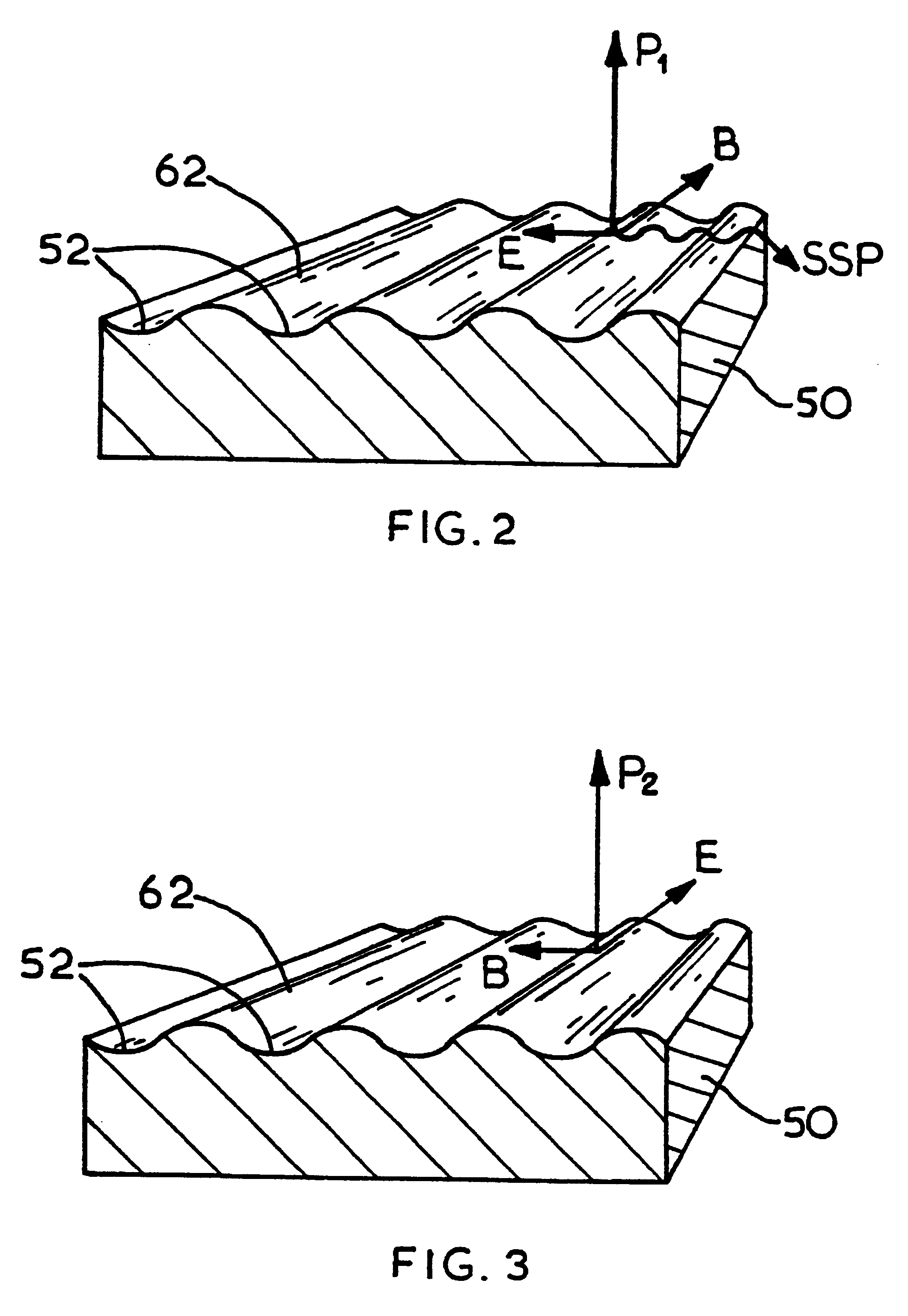Control of polarisation of vertical cavity surface emitting lasers
a technology of lasers and cavity surfaces, which is applied in the direction of lasers, optical resonator shapes and construction, semiconductor lasers, etc., can solve the problems of reducing the circular symmetry of the beam of light generated by the vcsel, adding complexity to the structure of the vcsel, and more complicated semiconductor structures
- Summary
- Abstract
- Description
- Claims
- Application Information
AI Technical Summary
Benefits of technology
Problems solved by technology
Method used
Image
Examples
first embodiment
FIG. 1 shows an embodiment of a polarising VCSEL (60) according to the present invention. The VCSEL (60) is grown on a substrate (4) which includes the bottom electrical contact (5) of the VCSEL and comprises a lower multi-layer Bragg stack or mirror (6), a gain region (8) and an upper multi-layer Bragg stack or mirror (10). The upper Bragg mirror (10) is partially reflecting and so light is emitted from the VCSEL (60) from its upper surface. On the upper surface is formed the top electrical contact of the VCSEL which is in the form of a corrugated metal mirror (50) surrounded by an annular region (16). As is well known in the art the gain region (8) consists of quantum wells. Normally the thickness of each layer in each of the Bragg stacks (6,10) are one quarter of the operating wavelength in the semiconductor material (i.e. the wavelength in air divided by four times the refractive index of the Bragg layer).
The substrate (4) is composed of Gallium Arsenide (GaAs) and the layers of...
second embodiment
The second embodiment shown in FIGS. 7 and 8 comprises a VCSEL (90) with like parts identified by the same numerals as in FIGS. 1, 4 and 6. The VCSEL (90), the top part of which is shown in FIG. 7 comprises an upper Bragg stack (10) with a diffraction grating (92) formed on or alternatively in its upper surface. The reflecting properties of the grating (92) are demonstrated schematically in FIG. 8. Part of an incident beam of light (94) from the Bragg stack (10) (shown in dotted lines in FIG. 8) is reflected by the upper surface of the grating (92) to produce a beam (96) which propagates back into the Bragg stack (10). However, the upper surface of the grating (92) is suitably corrugated so that part of the incident beam (94) is diffracted at the interface between the upper surface of the grating (92) and the air above it into a waveguide mode in the layer of grating as shown by light beams (100,102). The light beams (100,102) in the waveguide mode can also diffract from the interfa...
PUM
 Login to View More
Login to View More Abstract
Description
Claims
Application Information
 Login to View More
Login to View More - R&D
- Intellectual Property
- Life Sciences
- Materials
- Tech Scout
- Unparalleled Data Quality
- Higher Quality Content
- 60% Fewer Hallucinations
Browse by: Latest US Patents, China's latest patents, Technical Efficacy Thesaurus, Application Domain, Technology Topic, Popular Technical Reports.
© 2025 PatSnap. All rights reserved.Legal|Privacy policy|Modern Slavery Act Transparency Statement|Sitemap|About US| Contact US: help@patsnap.com



